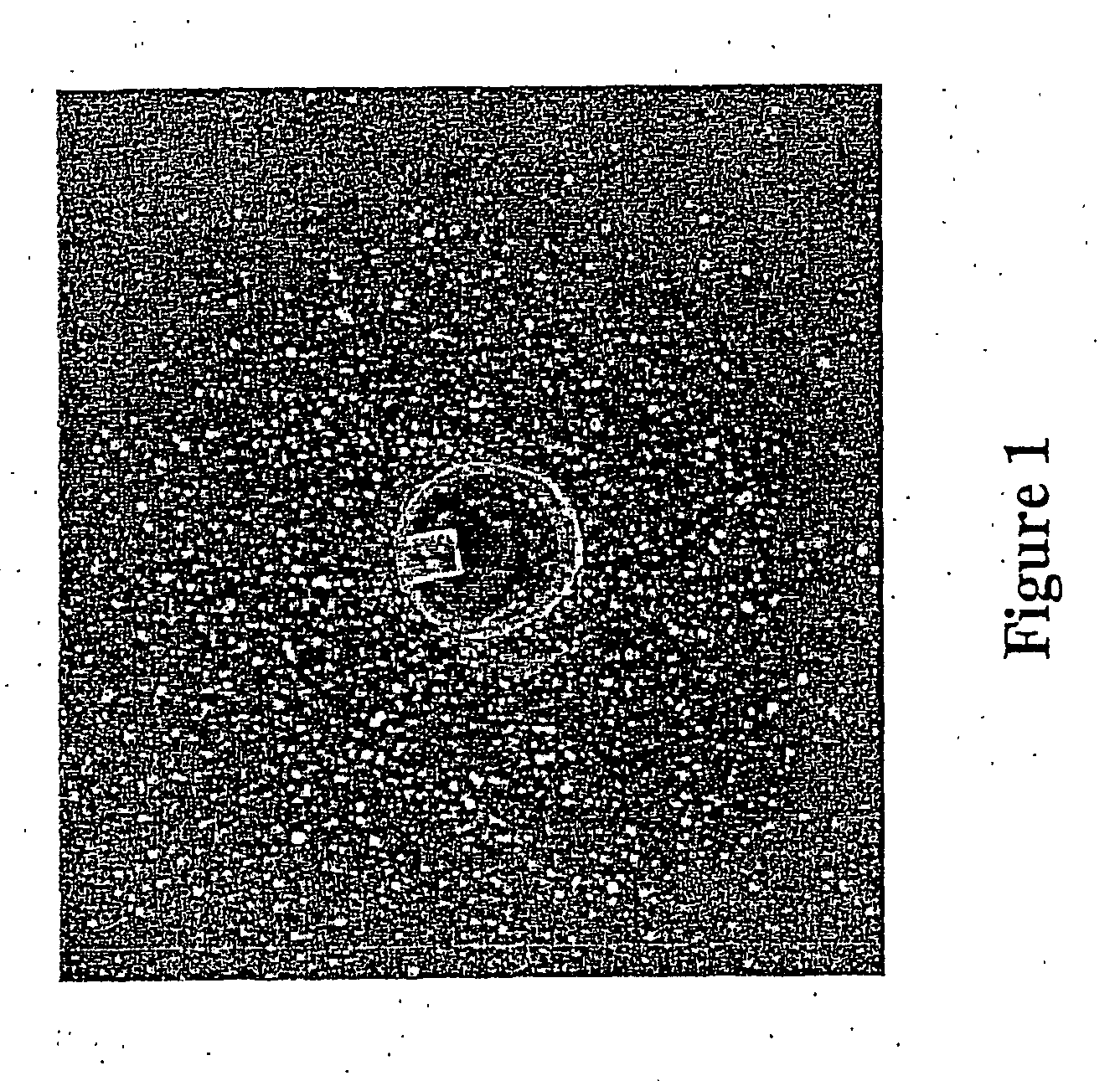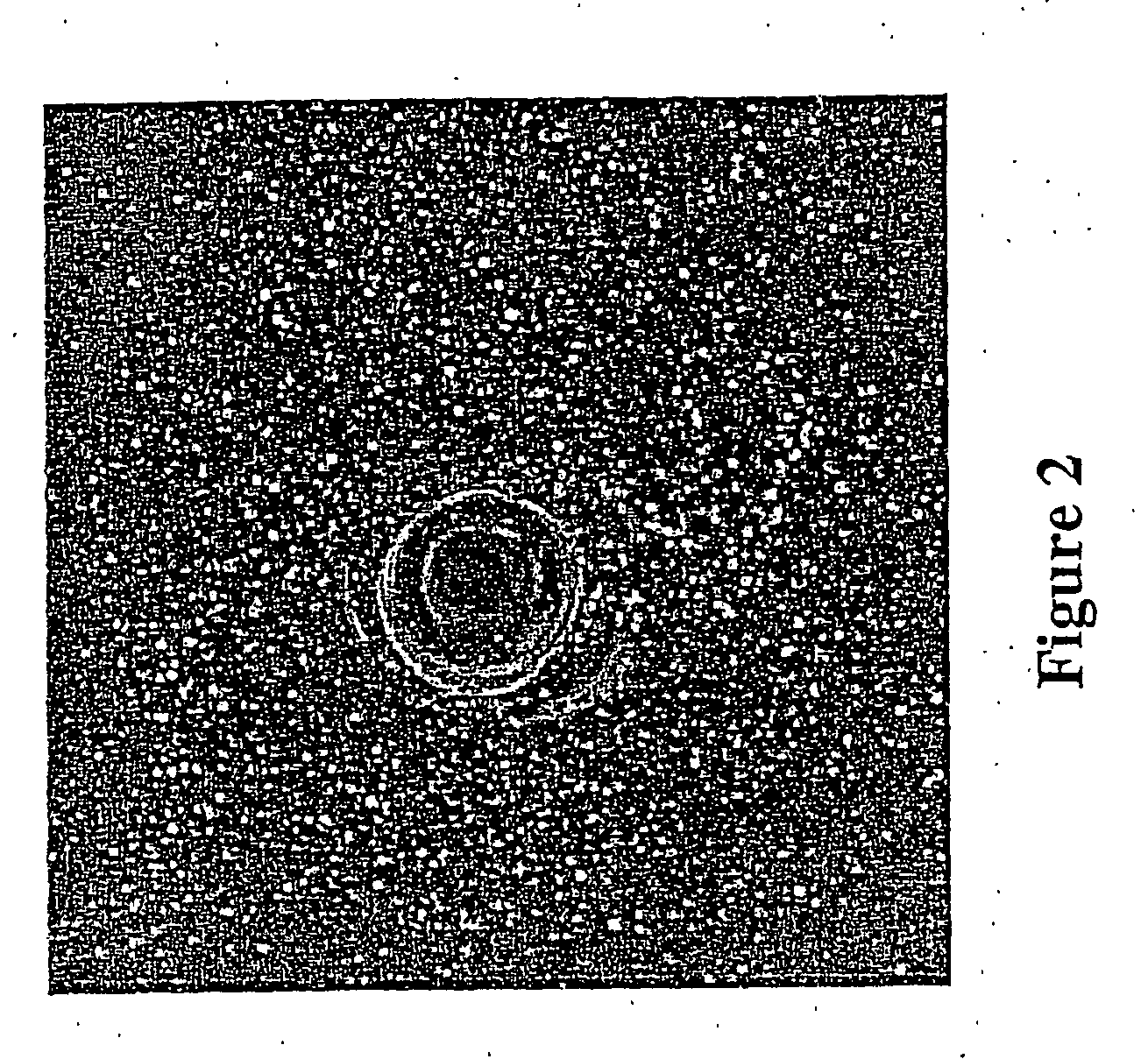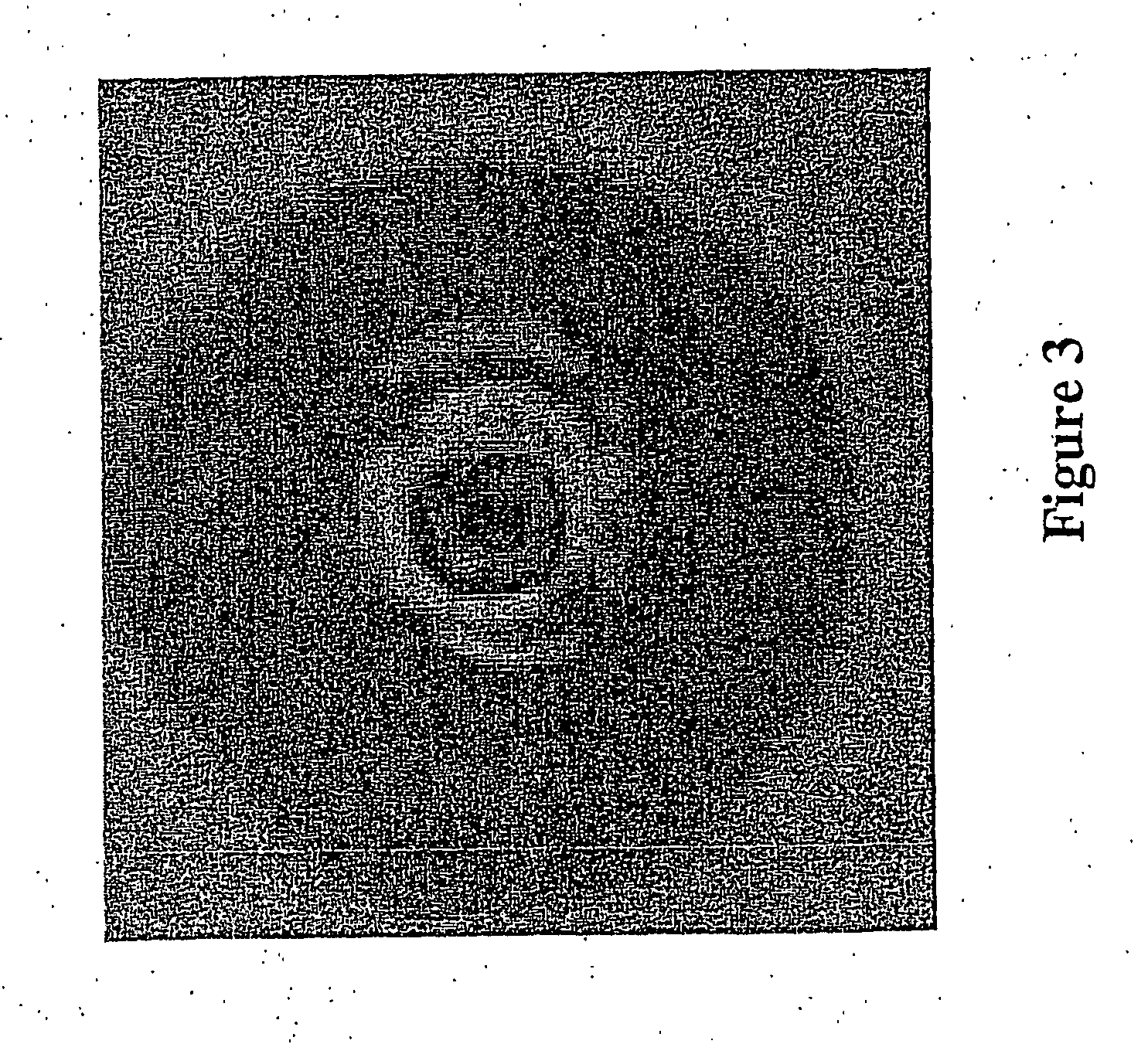Method for identifying cellular growth inhibitors
- Summary
- Abstract
- Description
- Claims
- Application Information
AI Technical Summary
Benefits of technology
Problems solved by technology
Method used
Image
Examples
example 1
Identification of FabF-Acting Substances in S. Aureus
Part A—Assay Protocol
[0067]S. aureus containing S1-1941, a plasmid expressing a xylose-inducible fabF anti-sense RNA (described in WO 00 / 44906 and in Forsyth et al., Mole. Microbiol. 2002, 43: 1387-1400), are inoculated into an LB broth culture medium supplemented with 34 mg / mL of chloramphenicol, and grown overnight at 37° C. with shaking (225 rpm). The culture is then diluted in the LB medium to a final optical density (λ=600 nm) of 0.3. Diluted cells (750 μL) are then added to a molten LB-agar medium (30 mL) supplemented with xylose (23.6 mM) and glucose (0.19 g / 100 mL) and equilibrated at 48° C. The molten mixture is briefly mixed and is then poured onto sterile disposable polystyrene 86×128 mm dishes (NUNC Cat. No. 242811), after which a TSP (=transferable solid phase screening system) casting tray (NUNC Cat. No. 445497) is placed on top to cast wells. The dishes are allowed to cool down to room temperature for about 15 mi...
example 2
Identification FabF-Acting Substances in S. Aureus from Natural Products
[0070] Substance-producing microorganisms were prepared as follows: Soil samples containing unidentified microorganisms were suspended in sterile water, and the suspension was applied to the surface of a culture dish containingISP-agar medium (Difco / Becton Dickinson Inc.). After surface-drying, the dish was incubated at 27° C. for 2-7 days until visible growth was obtained. Strips of agar containing microorganism were cut and removed from the dish for application onto assay plates prepared as described below. Alternatively, organic solvent (acetone) extracts of these microorganism were prepared and the solvent evaporated from the crude extract and resuspended in 100% DMSO.
[0071]S. aureus cells containing S1-1941 were cultured and assay plates were prepared as described in Example 1, except that no wells were cast in the agar. Following solidification of the S. aureus-containing agar plates, fresh agar strips c...
example 3
Identification FabF-Acting Substances in S. Aureus in a Liquid Format Using the Green Fluorescent Protein
[0074] The green fluorescent protein (GFP) reporter gene was used to identify fabF antisense revertants in liquid culture by the following method: S. aureus containing a plasmid encoding the antisense fabF DNA was used to develop an inducible GFP reporter system, where the GFP gene is transcriptionally silent until the fabF antisense containing plasmid DNA is deleted or rearranged. A plasmid, pM310, was constructed that consists of the fabF antisense vector (Forsyth et al, 2002), with a tetracycline repressor gene and its promoter (Geissendorfer et al., Appl. Microbiol. Biotechnol 1990, 33: 657-663) inserted downstream of the fabP antisense DNA. A second plasmid, pM302, was constructed that consists of the E. coli vector pUC19 (Gibco BRL) joined to the S. aureus vector pUB110 (ATCC 37015), through the EcoR1 and AatII restriction sites. At the pUC19 multicloning site, a GFP gene ...
PUM
| Property | Measurement | Unit |
|---|---|---|
| Electrical resistance | aaaaa | aaaaa |
| Acidity | aaaaa | aaaaa |
| Absorbance | aaaaa | aaaaa |
Abstract
Description
Claims
Application Information
 Login to View More
Login to View More - R&D
- Intellectual Property
- Life Sciences
- Materials
- Tech Scout
- Unparalleled Data Quality
- Higher Quality Content
- 60% Fewer Hallucinations
Browse by: Latest US Patents, China's latest patents, Technical Efficacy Thesaurus, Application Domain, Technology Topic, Popular Technical Reports.
© 2025 PatSnap. All rights reserved.Legal|Privacy policy|Modern Slavery Act Transparency Statement|Sitemap|About US| Contact US: help@patsnap.com



